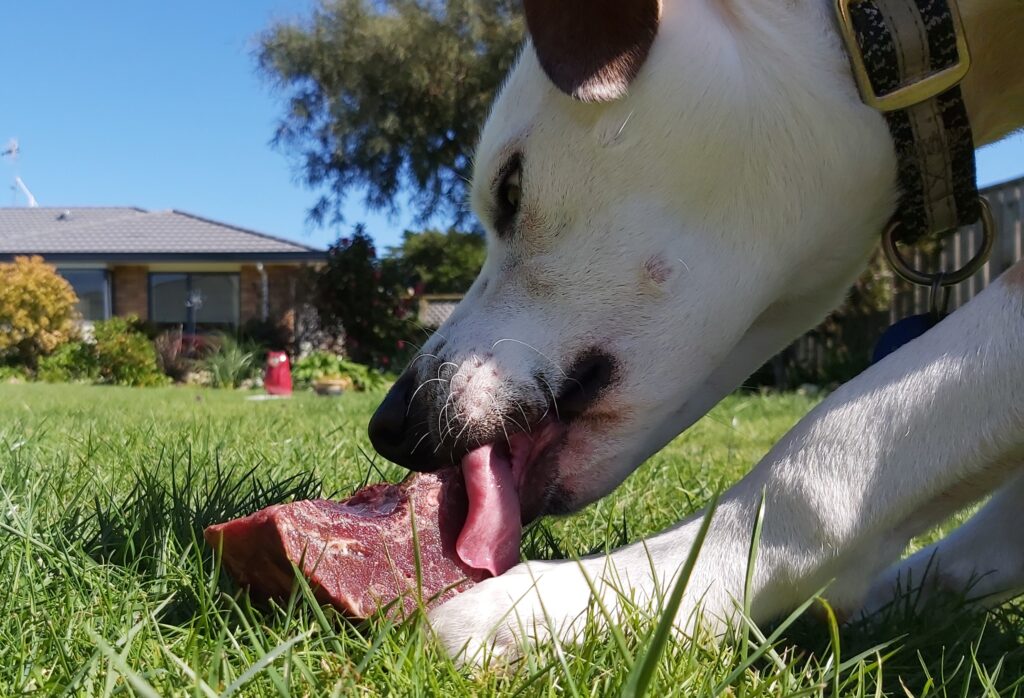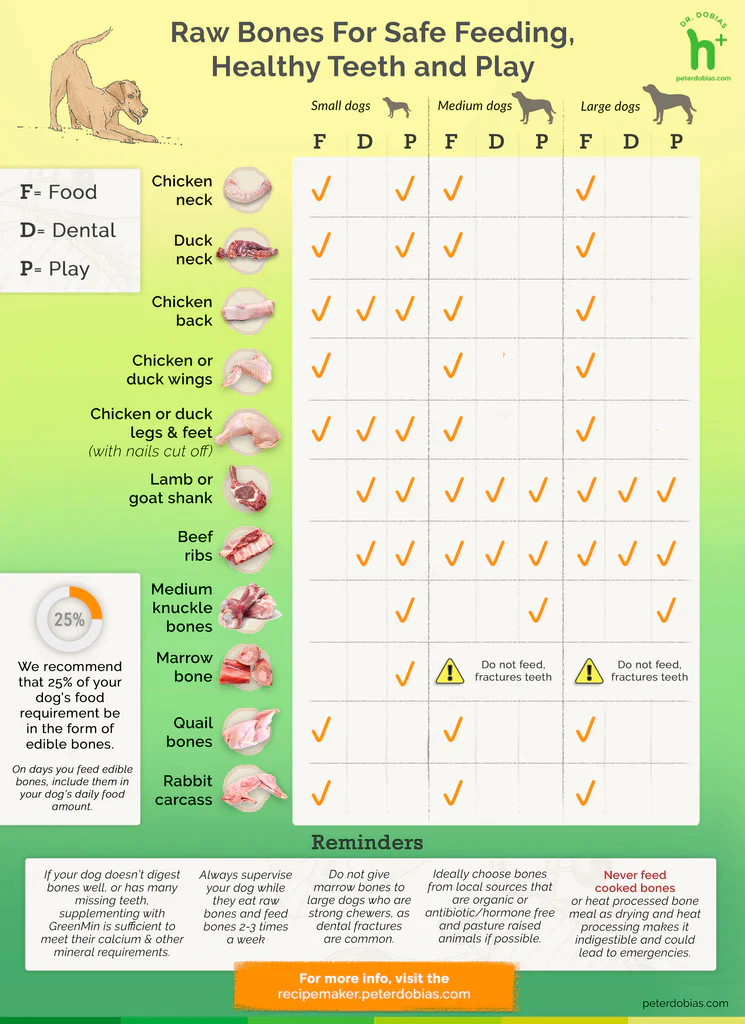Bones for Cats and Dogs: Nourishing Natural Chews and Potential Pitfalls
Bones for Cats and Dogs: Nourishing Natural Chews and Potential Pitfalls
In the realm of pet nutrition, the topic of feeding raw meaty bones to cats and dogs remains a hot debate. I am a passionate advocate for the benefits of feeding raw meaty bones. In this comprehensive guide, we will explore the advantages, potential risks, and best practices associated with incorporating bones into your pet’s diet.
Tana eating a meaty bone for dinner!

Understanding the Natural Instinct: Why Raw Meaty Bone Feeding Makes Sense
Nature often provides the best answers, and observing wild canines like wolves, foxes, and wild dogs reveals a vital truth: bones are an integral part of their diet. These animals naturally munch on meaty bones, gaining essential nutrients such as calcium and phosphorus, crucial for strong bones and teeth. Chewing bones also aids in dental hygiene, keeping teeth clean and free from periodontal diseases.
However, not all bones are created equal, and choosing the right type, size, and texture is paramount to ensuring your pet’s safety and overall well-being.
The Health Benefits of Raw Bones: More Than Just Dental Care
Feeding raw bones to your pets can offer a plethora of advantages:
- Dental Health: Raw bones can dramatically improve dental health, often eliminating the need for costly and unpleasant dental procedures.
- Physical and Mental Exercise: Chewing on bones not only strengthens jaw muscles but also provides mental stimulation, preventing boredom and behavioral issues.
- Digestive Health: Contrary to popular misconceptions, properly prepared raw bones rarely cause gastrointestinal issues. A dog’s stomach acid effectively breaks down bones, and in my experience, complications are minimal.
- Balanced Nutrition: Bones are rich in essential nutrients, contributing to a well-rounded diet when chosen wisely.
Addressing Concerns: Common Misgivings About Raw Bone Feeding
Many veterinarians express valid concerns about bone feeding, ranging from dental fractures to potential bacterial infections. Addressing these concerns is essential:
- Dental Fractures: Choosing bones suitable for your dog’s size mitigates the risk of dental fractures. Large, strong dogs should avoid thick-walled bones, ensuring safe chewing experiences.
- Gastrointestinal Issues: While concerns about blockages exist, proper bone selection and supervision significantly reduce this risk.
- Bacterial Contamination: Dogs have evolved to handle pathogens, and proper preparation minimizes the risk of infections. Minor exposure to bacteria can even enhance their immune systems.
- Imbalanced Diet: Raw meat, bones, and a plant-based diet, when balanced, provide superior nutrition compared to processed kibble. Every pet is unique, and a tailored approach ensures optimal health.
Choosing the Right Bones: A Guide Based on Size and Texture
Understanding your dog’s size, bite strength, and individual characteristics is crucial. Large dogs should avoid hard bones, focusing on options that promote dental health without risking dental fractures. Moderation is key; feeding bones twice to thrice a week strikes a healthy balance.

Alternatives and Supplements: When Bones Aren’t the Answer
Not every dog embraces bones, and in such cases, providing essential nutrients becomes essential. High-quality supplements, rich in minerals, vitamins, probiotics, and omega oils, bridge the nutritional gap effectively.
Cautionary Tales: Why Cooked Bones Are a Big No
Feeding cooked bones to dogs can lead to severe complications, as cooking alters their texture, making them indigestible and dangerous. Always prioritize raw bones to avoid emergencies and ensure your pet’s safety.
Exploring Beyond Bones: Chew Toys, Dental Treats, and Supplements
While natural bones reign supreme in dental hygiene, options like chew toys and dental treats exist. However, careful scrutiny of ingredients is vital, as not all commercial products guarantee health benefits. Supplements play a significant role in filling nutritional gaps, ensuring your pet’s overall well-being.
Conclusion: A Balanced Approach to Pet Nutrition
Feeding raw bones can transform your pet’s dental health and overall vitality when approached mindfully. By understanding your pet’s specific needs and choosing appropriate options, you can provide a natural, enjoyable, and safe experience. Remember, every pet is unique, and finding the right balance ensures a happy, healthy companion.
Wishing you and your furry friend many years of bone-crunching joy and vibrant health! 🦴🐾
Bones we have in stock in-store for you pets are:
- Chicken necks
- Pilchards
- Wallaby hips
- Possum tails
- Wallaby chunks
- Venison bones
In recognition of Dr. Peter Dobias, we present his Bone Safety Chart

